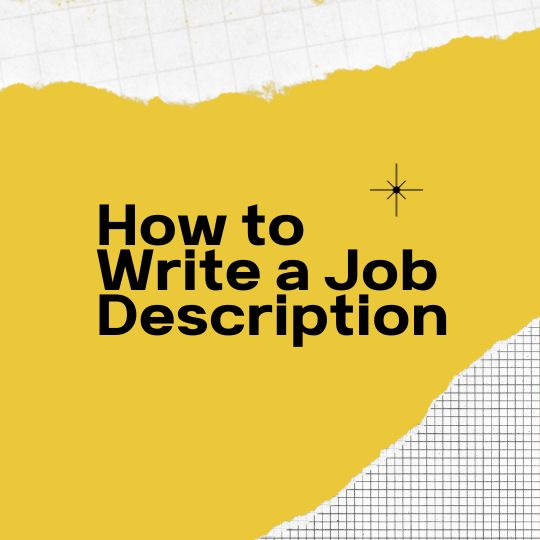Crafting an effective job description is a fundamental, essential step for attracting the right talent. Now it is harder than ever for employers to write effective job descriptions and listings that will stand out, with so much competition and the ever-expanding labor market.
Now, for Canadian employers specifically, it’s crucial to align your job description with the National Occupational Classification (NOC) system, a standardized framework used to classify and organize occupations in the Canadian labor market. But before we get into all that, let’s cover our bases first – the definition of a job desciption.
What is a job description?
A job description is a written document that outlines the main responsibilities, duties, qualifications, and other important details associated with a specific job or position within an organization. It’s purpose is to provide all the information a job candidate might need in order to decide if that’s the job they should be applying for; moreover, it acts as a formal and detailed account of what the job entails and what is expected of the employee who holds that specific position. Job descriptions (in general) are used for various purposes, including recruitment, development plans, performance management, and establishing clear expectations within the workplace.
Next thing we will be covering are the key components of a typical job description, as below listed:
- Job Title: The official title of the role within that organization.
- Summary/Objective: A brief overview of the purpose and goals of the role.
- Duties and Responsibilities: A detailed list of the tasks, functions, and responsibilities associated with the role.
- Qualifications: The education, skills, experience, and other competencies required for the position.
- Reporting Relationships: Information about the supervisor, subordinates (if applicable), and any other key relationships within the organizational structure.
- Working Conditions: Details about the (work) environment, physical requirements, and any special conditions associated with the role.
- Salary and Benefits: Compensation information, including salary range and details about benefits, if applicable.
The next logical step would be to ask oneself – well, how can I write an effective job description?
We’ve got you covered on that one as well! We outlined 10 steps that you can follow in order to write a good, effective job description. The list is practical and easy to follow, with additional tips tailored to Canadian employers only:
Step 1: Identify the role (position) and NOC Code
Determine the Role: Clearly define the role for which you are creating the job description. Identify the key responsibilities and duties associated with the role.
Find the NOC Code: Refer to the National Occupational Classification (NOC) system to identify the appropriate code for the position. This step is important because it will provide the potential applicant with necessary information, so both parties can save some time and energy – it esentially leaves less room for misunderstandings. The NOC system categorizes occupations based on skill type and skill level, providing a standardized framework for job classification in Canada.
Step 2: Create a clear Job Title and incorporate the code if applicable
Use NOC Language: Incorporate the NOC code into the job title if applicable. For example, “NOC 2173 – Software Engineer.”
Step 3: Write a concise overview
Introduce Your Company: Provide a brief introduction to your company, including its core mission and values.
Highlight the Role: Clearly state the purpose of the role and its importance within your company.
Step 4: Outline responsibilities
Refer to NOC duties: List the specific duties and responsibilities associated with the role. Use language similar to the NOC description to maintain consistency, but try to make it unique where and when you can in your description.
Prioritize tasks: Highlight the main responsibilities and tasks to give candidates a deeper understanding of the job’s primary focus. Make it clear and concise, focused on the most important parts.
Step 5: Specify qualifications
Educational requirements: Clearly state the required education level, if applicable. For example, “Bachelor’s degree in Computer Science.”
Experience: Specify the required years of experience and any specific/additional skills or certifications needed.
Step 6: Emphasize skills and competencies
Use NOC skill levels: Align the required skills with the NOC skill levels. For example, indicate if certain skills are essential at a specific proficiency level. Highlight those parts in your description.
Step 7: Provide salary information
Salary Range: Include a competitive salary range based on industry standards and the NOC classification. Make it as straightforward as you can, as that information can act as an additional filter and bring you only those candidates that find the applying conditions satisfactory.
Benefits: Mention any additional benefits or perks associated with the role.
Step 8: Inclusivity and diversity
Promote Inclusivity: Express your commitment to diversity and inclusion within the workplace.
Equal Opportunity Language: Ensure your job description adheres to Canadian employment standards and emphasizes equal opportunity.
Step 9: How to Apply
Application Process: Clearly outline the application process, including required documents and contact information. Simplify it as much as you can, your applicants will thank you for it!
Step 10: Review and Refine
Proofread: Check for grammatical errors (one more time!) and ensure clarity in your language.
Legal Compliance: Ensure that your job description complies with Canadian labor laws and regulations.
Seek Feedback: Get input/feedback from colleagues or HR professionals to ensure completeness and effectiveness.
By following these steps and incorporating NOC codes and language, you can create a job description that is not only tailored to Canadian employers but also facilitates accurate job classification and attracts qualified candidates. Also, we would like to outline again – follow the rules, but also let your creativity out in between the lines to make your job listing stand out. Much luck with writing your job descriptions, and also attracting the perfect candidates for those positions!


